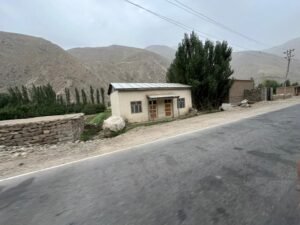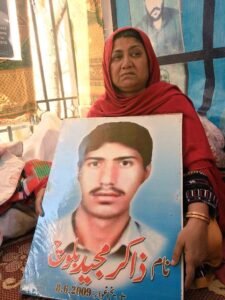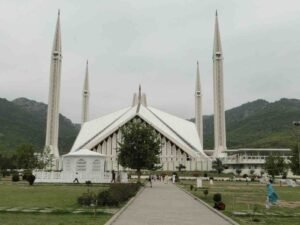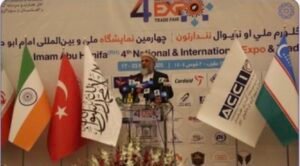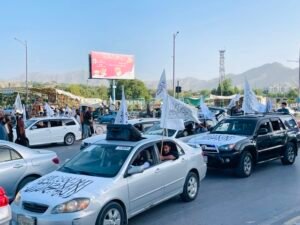False Compliance: How Pakistan Exploited the FATF Exit

Afghan currency called 'Afghani'
By Nasir Khattak
The Financial Action Task Force (FATF), the global watchdog for combating money laundering and terror financing, has repeatedly placed Pakistan on its Grey List due to persistent failures in dismantling terror networks and halting illicit financial flows. Most notably, from June 2018 to October 2022, Pakistan committed to a comprehensive 34-point action plan aimed at targeting the operational and financial infrastructure of groups like Lashkar-e-Taiba (LeT) and Jaish-e-Mohammad (JeM). However, while international oversight was temporarily appeased, the post-de-listing period has revealed alarming signs of a resurgence in terrorist activities within the country.
In the months following its removal from the Grey List in October 2022, multiple independent research reports and satellite imagery uncovered the rapid resurgence and expansion of terror-linked infrastructure. Rather than dismantling their infrastructure, these groups expanded it. According to satellite data analyzed by international researchers, Jaish-e-Mohammad’s (JeM) headquarters in Bahawalpur had more than doubled in size, now occupying approximately 18 acres. This expansion coincided with the period immediately following Pakistan’s FATF clearance.
New constructions at terror-linked sites like Usman-o-Ali Campus and Markaz Subhanallah are visible, and public gatherings linked to radical ideologies and recruitment efforts resumed in broad daylight. The brazenness of these activities, occurring just 8 kilometers from Pakistan military installations, suggests state tolerance if not complicity.
Eyewitness accounts corroborated these findings. Not only were these complexes actively being used for indoctrination and terrorist training, but state authorities also tried to downplay or deny their existence. A local government official claimed that JeM’s Bahawalpur complex was merely a madrasa. However, property records revealed that additional land had recently been sold to Abdul Rauf, the brother of JeM’s chief Masood Azhar and himself a UN-designated terrorist for his involvement in the 2008 Mumbai attacks. The article titled ‘Jaish-e-Mohammad, troubled games in Pakistan’ by Antoine Colonna in the French magazine Spectacle du Monde throws light on the activities happenings in these terror sites.
The expansion was not limited to Jaish-e-Mohammad. Lashkar-e-Taiba (LeT), responsible for some of the deadliest attacks on Indian soil, including the 2008 Mumbai attacks and the 2001 Indian Parliament assault, was also found to be flourishing under a thin veneer of legality. LeT’s charitable front, Jamaat-ud-Dawa (JuD), continued to operate despite being banned by multiple global institutions including the UN, US, and Australia. The Hudson Institute reported in 2022 that JuD was being used to push nationalist-Islamist objectives in Pakistan, especially in Balochistan. It was even employed by the Pakistani state to counter Islamic State (ISIS) influence, revealing an official preference for homegrown terror groups over foreign ones.
Beyond ideology, the financial machinery of these terror outfits remains robust, with Pakistan acting as a critical node in the global narco-terrorism pipeline. In 2021, the National Investigation Agency (NIA) in India linked a colossal 2,900 kg heroin seizure at Mundra Port—valued at over ₹210 billion—to Lashkar-e-Taiba’s transnational narcotics network. The drugs were smuggled from Afghanistan into India via Iran and Pakistan under the guise of talc powder consignments.
These narcotics not only devastate youth in India but also fund terrorism. Subsequent investigations revealed that similar smuggling routes were used repeatedly, despite India’s efforts to ban cargo from Pakistan, Iran, and Afghanistan. Shockingly, just weeks after announcing such bans, key ports resumed operations with minimal oversight. In several instances, customs officers involved in these investigations were mysteriously found dead. This narco-financing network underscores a significant aspect of Pakistan’s continued support for terrorism—not just through training and shelter but by facilitating its economic underpinnings.
The evidence is stark: Pakistan has not only failed to enforce robust legal and institutional mechanisms to combat terrorism financing, but its removal from the FATF Grey List appears to have emboldened proscribed organizations to reassert themselves with renewed vigor. This regression warrants urgent international attention. As the FATF prepares for its upcoming plenary in June, it must seriously consider re-listing Pakistan. Furthermore, institutions like the World Bank must re-evaluate the proposed $20 billion strategic funding framework for Pakistan through 2035, ensuring that development aid is not diverted toward military expenditure or used to indirectly fund terrorist activities.
Nasir Khattak specializes in the China-Pakistan region, with a particular focus on the economic relations between the two countries.
Note: The contents of the article are of sole responsibility of the author. Afghan Diaspora Network will not be responsible for any inaccurate or incorrect statement in the articles.


